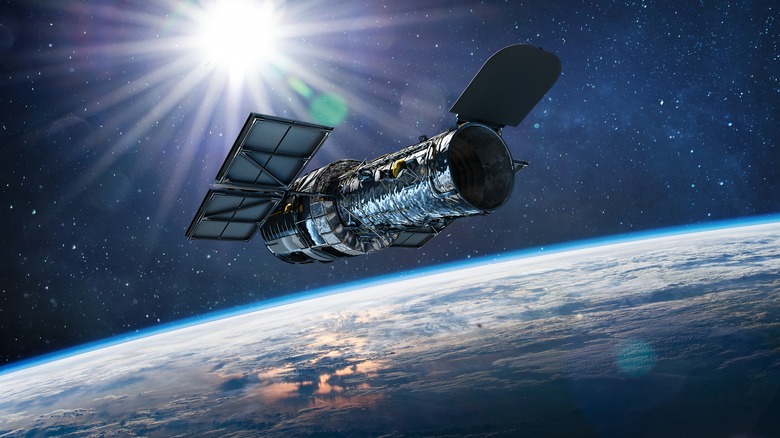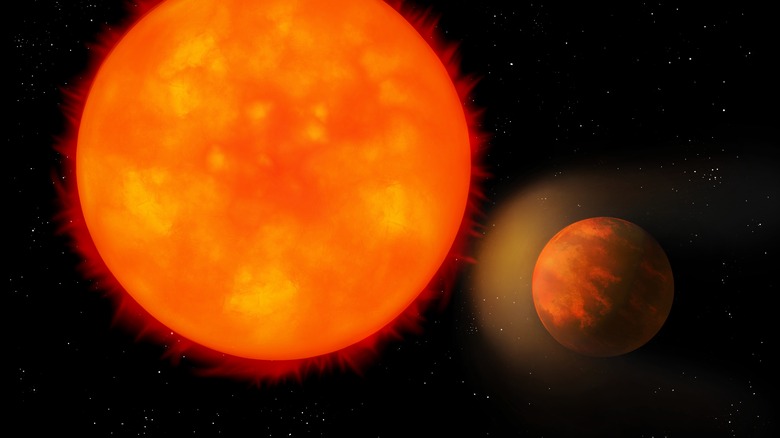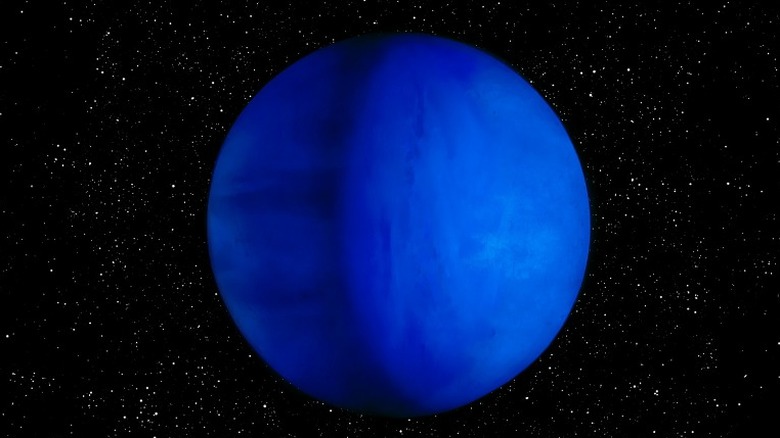This Planet Rains Molten Glass And Has Wind Faster Than The Speed Of Sound
The possibility of planets besides our own existing elsewhere in the universe has been pondered (per Slate) for over 2,000 years. In the 16th century, Giordano Bruno put forth the notion that stars were other suns like our own, each with their own planets (a notion for which he was burned, according to a blog at Scientific American). The scientific hunt for exoplanets began picking up steam in the 1980s and by early 1992, reports Inverse, the first one was confirmed orbiting a pulsar. Since then, the number of exoplanets discovered has grown at an incredible rate: As of right now, says NASA, over 5,000 have been discovered.
Looking for planets outside of our solar system isn't as simple as pointing a telescope at a star and looking for it. Stars are just too bright to see anything orbiting around them (per NASA). Instead, astronomers have to rely on indirect methods to find these planets. One way we can detect them is to look for the gravitational influence of the planet on the star. If the planet is big enough, it can make its parent star wobble, causing a regular Doppler shift in the star's light that we can detect (via MIT). Another method relies on the planet's plane of orbit being edge-on to our solar system. When that happens, we can detect the change in luminosity of the star when its planet passes in front of it (via Université de Montréal).
Hot Jupiter
Due to the nature of these two detection methods, the most likely planets to be found are large and orbit close to their parent star. This is because massive planets affect the wobble of their star more, making it easier to detect Doppler shifts. Their size also means that the star's light is dimmed more when the planet transits in front of it. The tighter orbit means it revolves around its star faster, making it easier to detect changes in color or luminosity (via Smithsonian).
The second exoplanet discovered fit exactly that criteria. Scientists using the Doppler method of detection found 51 Pegasi b, a planet half as dense as Jupiter, but twice its size (via NASA) orbiting so close to its parent star its "year" was only four days and six hours long (via Britannica). This new class of planets was dubbed Hot Jupiters (also via NASA) and for over a decade, they made up the vast majority of new planets discovered (per Science). One of these planets, discovered in 2005, was extreme even for Hot Jupiter standards.
Blue inferno
The planet in question is HD 189733 b (per the database Open Expoplanet Catalogue) and it orbits a small, nearby star in the Vulpecula constellation (per Sea and Sky). It's a mere 2.9 million miles away from its sun, compared to Mercury and Earth which are 36 million and 93 million miles away from the sun, respectively. So not only is it hot (over 2,000 degrees F), it's tidally locked to its star, which means the same side of the planet is always facing its star. This causes a thermal imbalance between day side and the night side of the planet (a difference of up to 500 degrees F, says NASA) which produces winds up to 5,400 mph (per Space). Compare that to the speed of sound on earth which is a measly 761 mph.
HD 189733 b holds the distinction of being the first exoplanet we know the color of. According to Nature, three separate studies have confirmed that its atmosphere is a deep blue like our oceans. Scientists aren't entirely sure what causes the blue color, but they have a hunch (per Astronomy and Astrophysics) it's a condensate of MgSiO3, also known as enstatite, a mineral which can easily form a glass (via the Proceedings of the National Academy of Sciences of the United States of America).
So just to recap for all you extremophiles busily planning your next vacation: hot enough to melt gold, supersonic winds, and clouds of molten glass. It's practically paradise.


